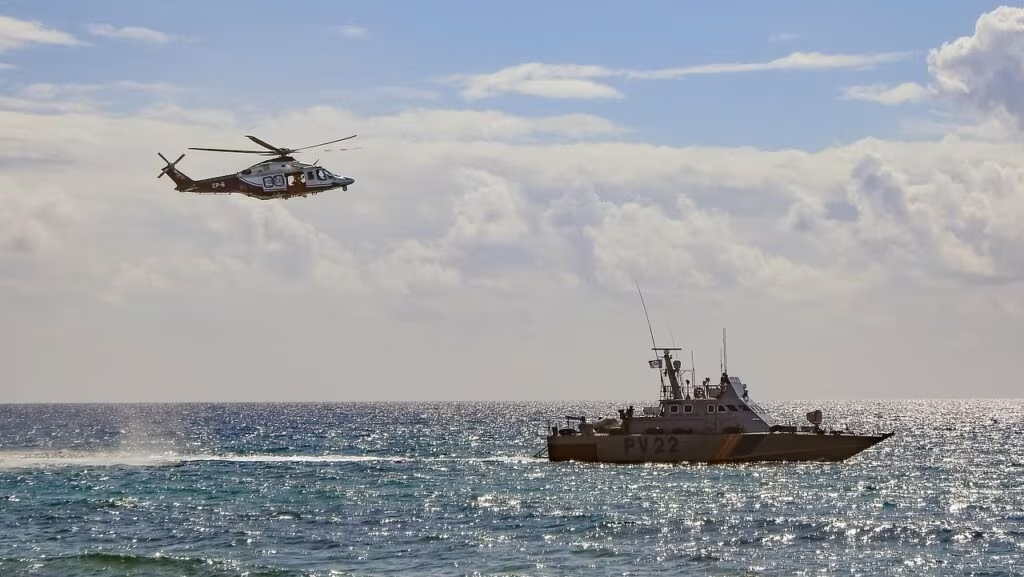Accountability Crisis in Lethal Maritime Interdiction Operations
In a significant revelation raising serious questions about military accountability and the Rules of Engagement (ROE), the Department of Defense (DOD) has acknowledged that it cannot positively identify the individuals killed during lethal military strikes targeting vessels suspected of drug smuggling.
This admission, brought to light through congressional scrutiny, underscores a critical gap in the DOD’s post-strike assessment procedures. While the military confirms the successful neutralization of vessels linked to illicit trafficking, officials maintain that positive identification of the occupants is not a prerequisite for authorizing lethal force, provided the vessel’s connection to smuggling is established.
This policy has drawn sharp criticism from lawmakers who argue that the lack of basic casualty data undermines transparency and prevents proper oversight of lethal operations conducted under the guise of counter-narcotics missions.
The DOD’s Justification: Targeting the Activity, Not the Individual
The controversy centers on the DOD’s interpretation of its authority and the criteria used to authorize strikes, particularly those occurring in international waters or transit zones often used for moving illegal narcotics from South America northward.
According to statements made by DOD officials to Congress, the threshold for authorizing a strike focuses primarily on the activity and the vessel, rather than the identity of the people aboard. Officials argue that once a vessel is confirmed to be engaged in high-level drug smuggling—often through intelligence, surveillance, and reconnaissance (ISR) data—the military is justified in employing lethal force to interdict the operation.
Criteria for Lethal Engagement
The DOD’s operational approach relies on establishing a clear link between the target and organized criminal activity. The key justification points cited by officials include:
- Proof of Smuggling Connection: Sufficient intelligence or visual confirmation linking the vessel to the transport of large quantities of illegal narcotics.
- Operational Necessity: The need to stop the flow of drugs, often involving fast-moving, non-compliant vessels (sometimes referred to as “go-fasts” or low-profile vessels).
- Rules of Engagement (ROE): The established protocols permit the use of lethal force when non-lethal methods are deemed impractical or ineffective in stopping the criminal activity, and when the activity poses a threat to U.S. interests or personnel.
Crucially, DOD officials asserted that the requirement for positive identification (PID)—the process of confirming the name, nationality, or specific criminal affiliation of every individual on board—is not mandatory for these specific counter-narcotics strikes. This is a significant departure from the stringent PID requirements typically applied to counter-terrorism strikes, where the identity of the high-value target is paramount.

Congressional Scrutiny and Calls for Transparency
The lack of confirmed casualty data has fueled concerns on Capitol Hill regarding accountability and the potential for unintended harm. Representative Sara Jacobs (D-Calif.) has been a vocal critic, highlighting the dangers inherent in authorizing lethal force without a corresponding mechanism for post-strike verification and transparency.
Rep. Jacobs emphasized that the DOD’s inability to identify the deceased makes it impossible to answer fundamental questions about the strikes, including:
- Were the casualties exclusively high-level smugglers, or were there lower-level crew members, or even potential victims of trafficking, aboard?
- What were the nationalities of the individuals killed?
- How can the DOD ensure that the Rules of Engagement are being followed if the outcomes—the identities of the deceased—are unknown?
“The fact that DOD officials believe they do not need to positively identify individuals on these vessels to conduct lethal strikes, only prove a connection to smuggling, is deeply troubling,” Rep. Jacobs stated. “This policy creates a blind spot in accountability and makes it impossible for Congress to conduct proper oversight of the lethal force we authorize.”
Lawmakers are pushing the DOD to implement more rigorous post-strike assessment protocols, including efforts to retrieve and analyze evidence that could lead to identification, even in cases where the vessel is sunk or destroyed.
The Challenge of Post-Strike Assessment
Experts note that conducting thorough post-strike assessments in maritime environments presents unique challenges. Unlike land-based strikes, evidence collection at sea is often complicated by:
- Vessel Destruction: Many smuggling vessels are designed to be scuttled quickly upon detection, destroying evidence and making recovery of remains difficult.
- Remote Locations: Operations often occur far from established bases, complicating immediate forensic analysis.
- Operational Risk: Recovery efforts can expose military personnel to unnecessary risk in hostile or unstable waters.
Despite these challenges, critics argue that the DOD must prioritize establishing the identities of those killed to maintain credibility and adhere to international norms regarding the use of force.

Broader Implications for International Law and Accountability
The DOD’s policy regarding identification in counter-smuggling strikes touches upon complex issues of international law, sovereignty, and the expanding role of the U.S. military in law enforcement missions.
When the DOD uses Title 10 authority (military operations) for missions that are fundamentally law enforcement in nature (counter-narcotics), the legal and ethical lines become blurred. The standard for using lethal force in a law enforcement context is typically much higher than in a traditional armed conflict. The inability to confirm the identities of the deceased makes it nearly impossible to verify whether the use of force was proportional and necessary under international legal standards.
The Counter-Terrorism Precedent
This situation echoes past controversies surrounding drone strikes and counter-terrorism operations, where the lack of confirmed identification led to documented cases of misidentification and unintended civilian casualties. While drug smuggling is a serious criminal enterprise, the legal framework for targeting smugglers differs significantly from that used for declared enemy combatants.
By focusing solely on the activity (smuggling) and not the identity or status of the individuals, the DOD risks setting a precedent that could be interpreted as lowering the threshold for lethal engagement against non-state actors operating outside traditional conflict zones.

Key Takeaways
This ongoing debate highlights the tension between operational efficiency in stopping drug flows and the necessity of democratic accountability in the use of lethal force. The core facts are clear:
- DOD Admission: The Department of Defense confirmed it does not possess positive identification for individuals killed in recent lethal strikes against suspected drug smuggling vessels.
- Targeting Criteria: Officials justify the strikes based on establishing a connection to smuggling activity, arguing that individual identification is not required under current operational ROE.
- Congressional Concern: Rep. Sara Jacobs and others are demanding greater transparency, arguing that the lack of identification prevents effective oversight and assessment of potential civilian harm.
- Legal Ambiguity: The policy raises complex questions about applying military lethal force standards to missions that are essentially law enforcement operations.
Conclusion
The DOD’s policy of prioritizing the disruption of smuggling operations over the positive identification of casualties creates a significant challenge for congressional oversight and public trust. While the mission to stop the flow of illegal narcotics is critical, the use of lethal force must be coupled with rigorous, transparent accountability measures. As Congress continues to press for answers, the DOD faces increasing pressure to revise its post-strike assessment procedures to ensure that every life taken, even in the pursuit of counter-narcotics goals, is accounted for and justified under the highest standards of military conduct and international law.
Original author: Leo Shane III
Originally published: October 30, 2025
Editorial note: Our team reviewed and enhanced this coverage with AI-assisted tools and human editing to add helpful context while preserving verified facts and quotations from the original source.
We encourage you to consult the publisher above for the complete report and to reach out if you spot inaccuracies or compliance concerns.

